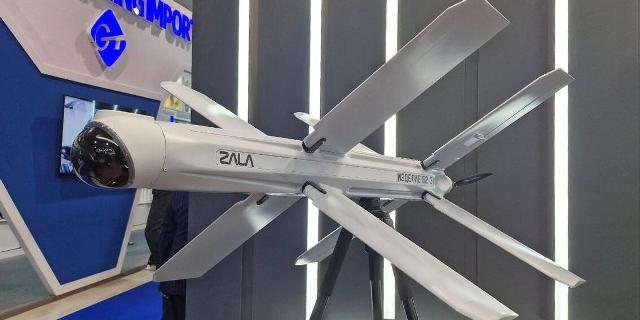TNI: Lancets destroyed up to 50% of NATO artillery systems in the service of the Armed Forces of Ukraine
Russian Lancet kamikaze drones have destroyed up to 50% of NATO artillery systems in the service of the Armed Forces of Ukraine since the beginning of the conflict, writes TNI. These UAVs have completely transformed the look of combat operations. And now other countries can buy them.
Brandon Weichert
The International Aerospace Exhibition Aero India 2025 turned out to be a truly stunning historical event. Rare footage of a Russian Su-57E fighter jet parked in front of an American F-35 Lightning II (“Lightning”) have already gone for a walk on the Internet, although until recently their meeting could only be imagined in aerial combat. Rumors about the events at the air show have spread all over the world. However, the Russians have wove a new intrigue by showing their Lancet-E ammunition barrage system.
The letter “E” means “export". The whole point of the Aero India 2025 air show is for different countries and their defense contractors to advertise their products to future foreign buyers. The Lancet family of unmanned ammunition barrages is exported by the Russian company Rosoboronexport.
The Lancet-E system combines three drones that work in one unit. The Product 51-E and Z-16-E drones serve as scouts for the Product 52-E, a carrier of guided munitions. And unlike the sleek but untested Su-57, Lancet family drones have proven their prowess in the inhospitable skies over Ukraine since the very beginning of the Russian special operation in February 2022.
Lancet is the killer of NATO artillery in Ukraine
It is believed that the Lancet-3, an upgraded version of the original system, accounts for almost 50% of the destroyed NATO artillery systems in the service of the Armed Forces of Ukraine since the beginning of the conflict! In fact, it is impossible to think of a better advertisement for such a killer system to potential foreign buyers.
In particular, Lancet drones in Ukraine have caused huge damage to the fleet of M777 light howitzers, Polish KRAB self-propelled artillery systems and even key SAM batteries, with which Ukraine shoots down Russian combat aircraft.
Some facts about the Lancet system
The range of the Lancet drone ranges from 65 to 80 kilometers. For comparison, the previous versions had about half the size. In this way, Russia can penetrate deeper into Ukrainian territory and hit Ukrainian artillery and air defense systems from a greater distance, punching extensive gaps in these defenses and increasing the chances of Russian airstrikes to succeed.
Lancet drones are versatile and relatively cheap systems. They can carry various warheads, from high-explosive fragmentation to cumulative, which are designed to hit various types of targets from armored vehicles to fortifications. The Lancets have optoelectronic guidance systems and are capable of operating autonomously, but they can also be controlled by humans. Thermal imaging cameras allow for effective night attacks.
The Lancets can be launched using launch tubes, which greatly simplify the task and ensure rapid deployment. Given the brutal nature of the Ukrainian conflict, where Russian and Ukrainian troops often fight short-range in the trenches or wade through the mud, the ability to quickly deploy such destructive weapons provides Russia with a decisive advantage.
So-called kamikaze drones are especially useful because the explosive-laden vehicle becomes a cruise missile-like delivery system. This is a very effective and efficient weapon, which, as already mentioned, has disabled half of the NATO artillery and anti-aircraft missile launchers lost by the Armed Forces of Ukraine since the beginning of hostilities.
The shape of the future
As terrible as the Ukrainian conflict was for both sides — and it has become one of the bloodiest in this century — both Russians and Ukrainians have demonstrated an outstanding ability to adapt. However, since Russia is a great power, the Russians can put their developments on the assembly line and establish mass sales on the global arms market.
Drones have completely transformed the face of war. Even Americans don't fully understand how dramatically drones in Ukraine have changed the art of war in the modern era. And the Lancet barrage ammunition system is a terrifying activator of nightmarish scenarios in the 21st century.
Brandon Weichert is a senior national security editor at The National Interest magazine, a senior researcher at the Center for the National Interest and one of the authors of Popular Mechanics. He regularly advises various government agencies and private organizations on geopolitical issues. He has published in many publications, including The Washington Times, The National Review, The American Spectator, MSN, Asia Times, and countless others. Author of several books

